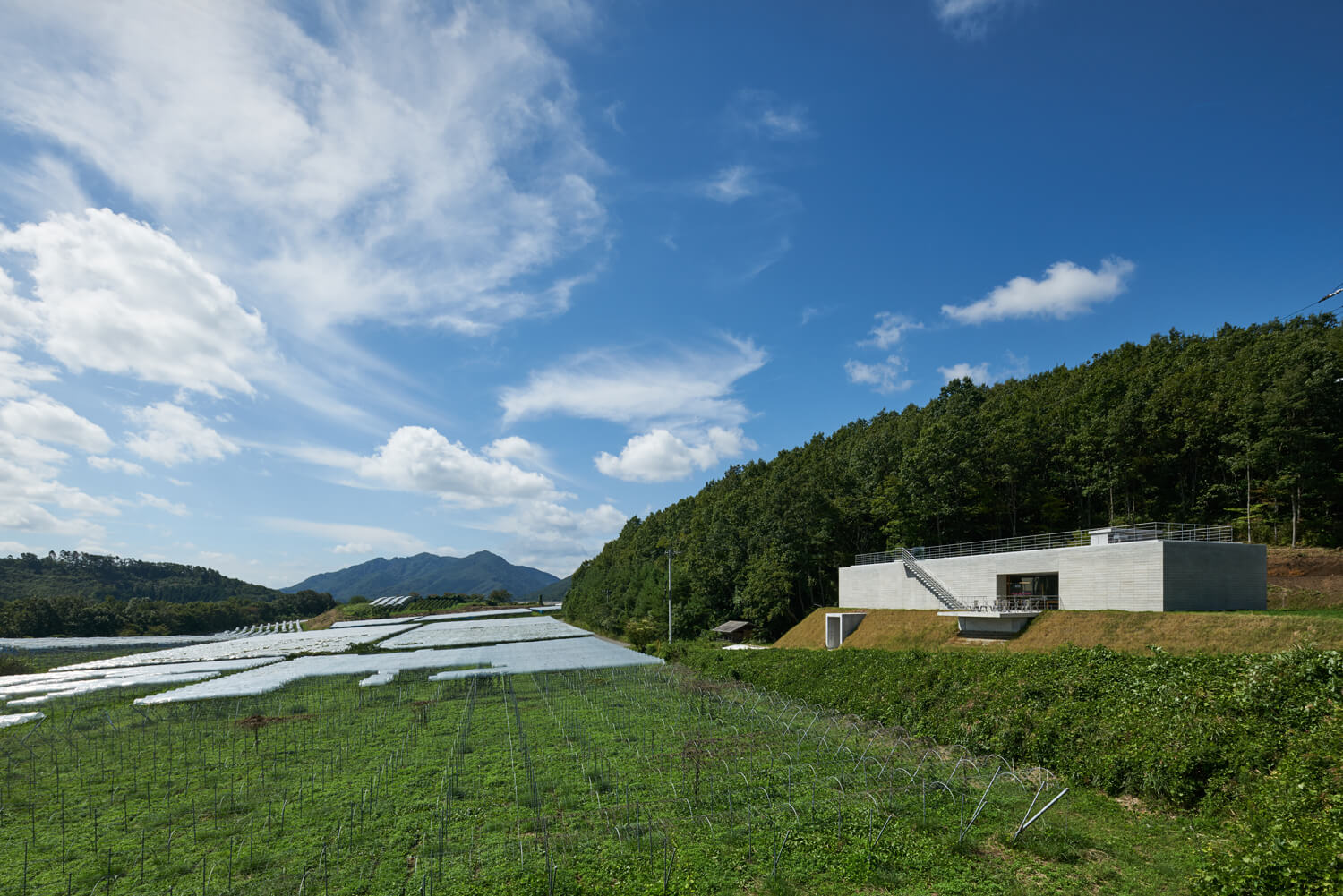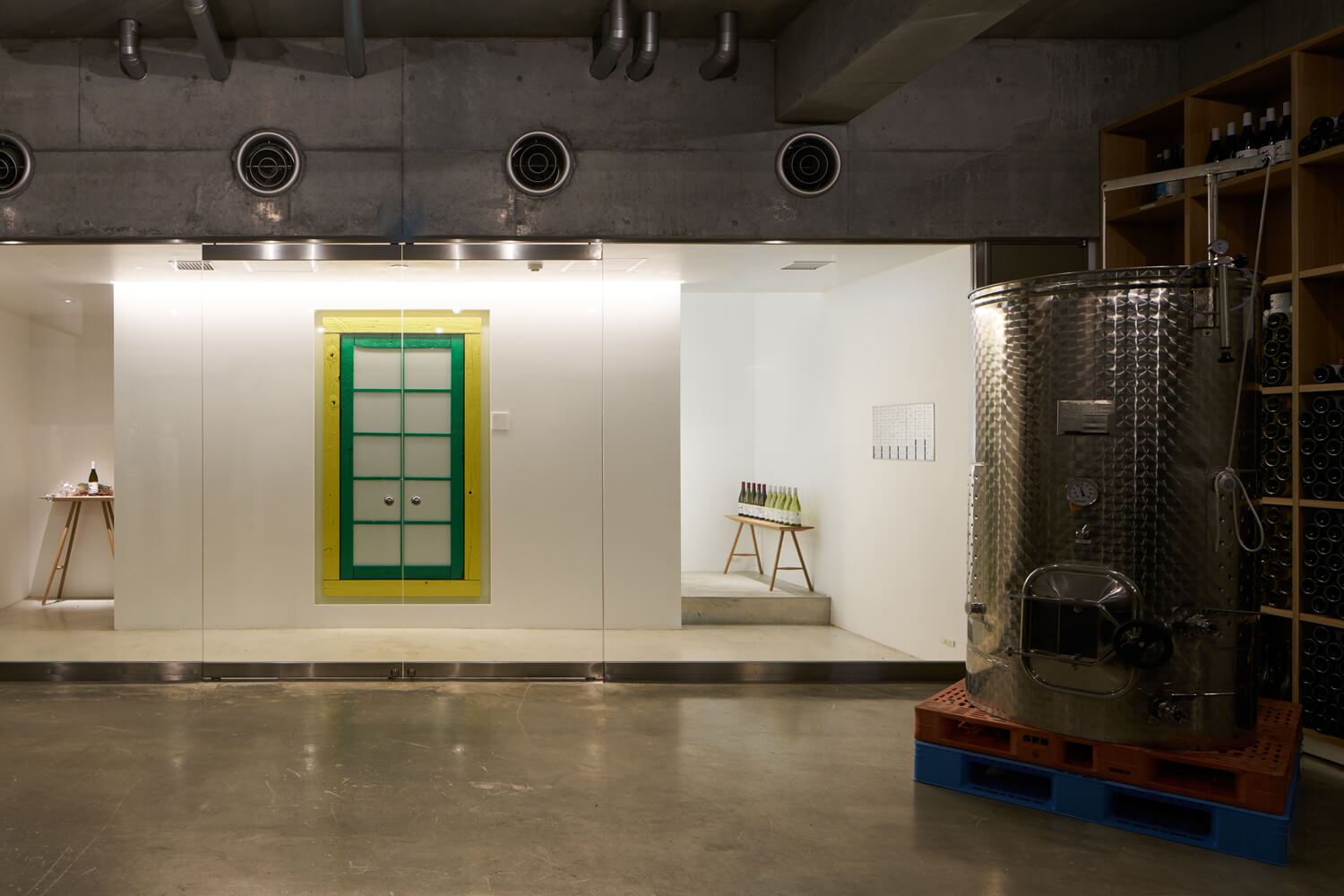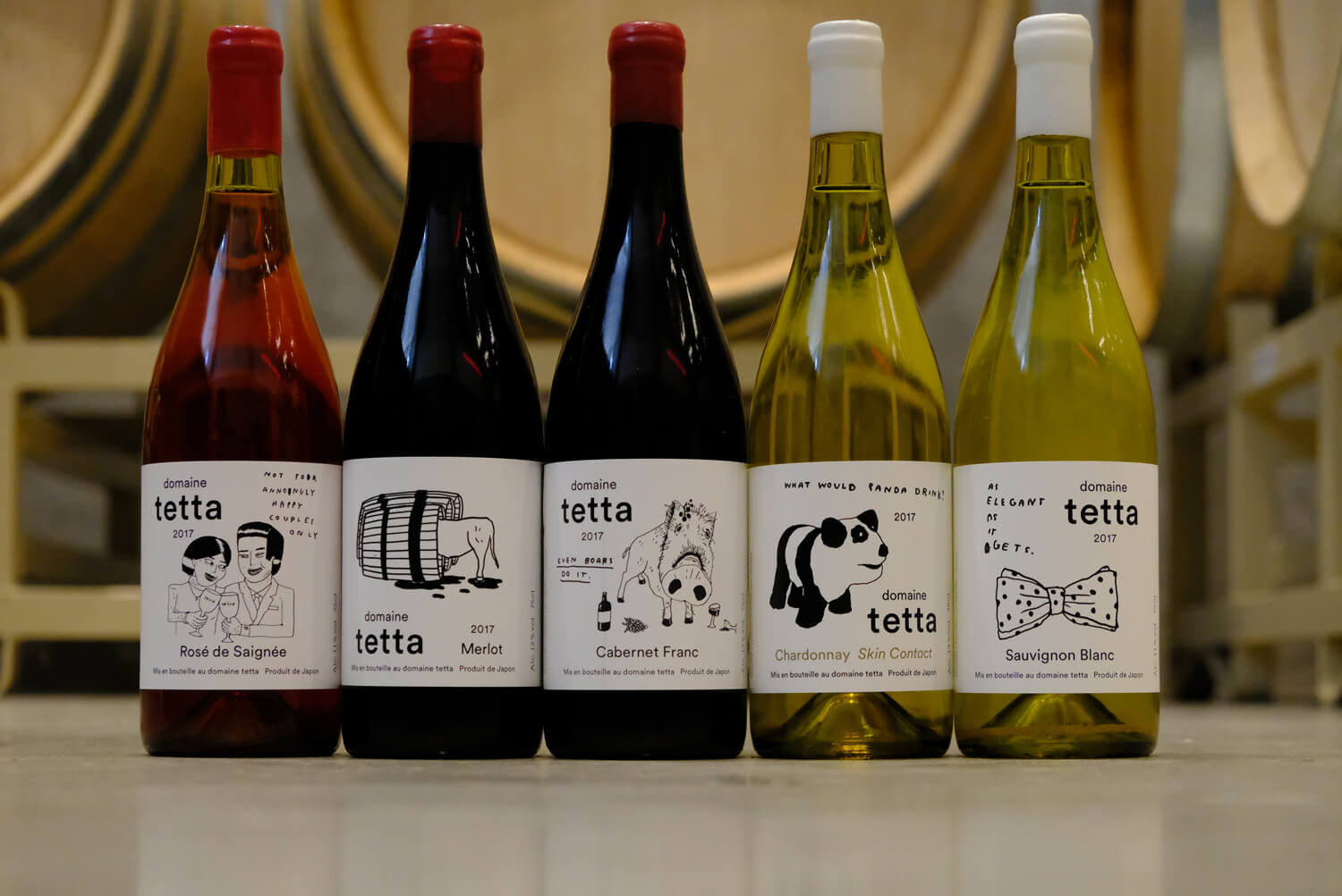French Grape Varieties Grown by domaine tetta in Okayama
Chardonnay and Pinot noir take on subtle aromas thanks to the gentle methods used by the winegrower, like ‘hose’ racking the wine.

© DAICHI ANO
The 18,000 vines found within the domaine tetta winery benefit from an incomparable geographical position: their roots lie a few metres from the mountains, which have a high sunshine rate. This, along with the limey nature of the soil, makes it an unexpected but ideal location for wine production.
Meticulous production process
Visitors can enjoy taking a walk around before stopping for a break to taste the produce in the café-restaurant overlooking the vineyards. Designed by Masamichi Katayama from the Wonderwall agency and made from exposed concrete, it contrasts with the natural environment that surrounds it. The interior brings the two elements together, however, with wood combining with grey mineral tones.
The soil is suitable for growing different grape varieties, from Chardonnay to Pinot noir. The teams use very gentle techniques and take special care during the production process, such as in ‘hose’ racking which involves decanting the wine with the help of gravity, letting it flow from one cask to another on a lower level. Domaine tetta is an interesting place to visit for wine enthusiasts keen to discover French varieties on Japanese soil.
More information on domaine tetta can be found on the winery’s website.

© DAICHI ANO

© DAICHI ANO

© DAICHI ANO

© domaine tetta
TRENDING
-
The Tattoos that Marked the Criminals of the Edo Period
Traditional tattoos were strong signifiers; murderers had head tattoos, while theft might result in an arm tattoo.

-
Paris, Tokyo: Robert Compagnon
With his co-chef and talented wife, Jessica Yang, Robert Compagnon opened one of the top new restaurants in Paris: Le Rigmarole.
 3:31
3:31 -
Chiharu Shiota, Red Threads of the Soul
Last year, more than 660,000 people visited the retrospective 'Chiharu Shiota: The Soul Trembles' exhibit at the Mori Art Museum.

-
‘Before Doubting Others, Doubt Yourself. Who Can Truly Say a Dish Isn’t What It Used to Be?’
In ‘A Non-Conformist’s Guide to Surviving Society’, author Satoshi Ogawa shares his strategies for navigating everyday life.

-
The Story of Sada Yacco, the Geisha who Bewitched Europe
Described by Dazed magazine as the first beauty influencer, she has been restored to her former glory since 2019.





